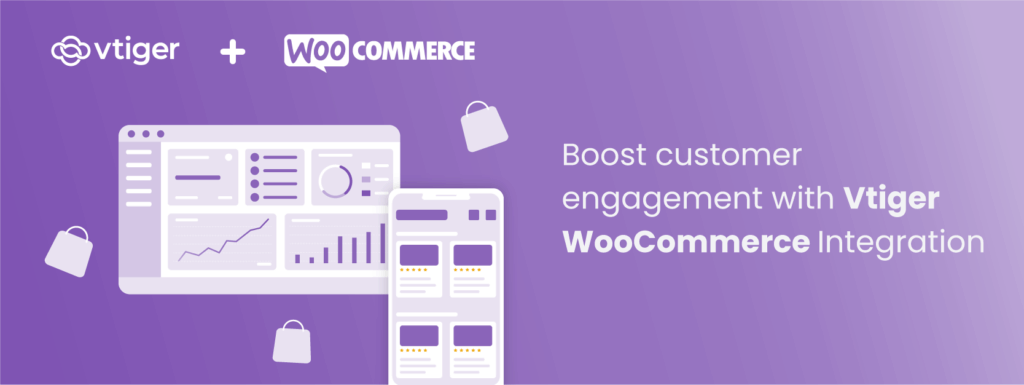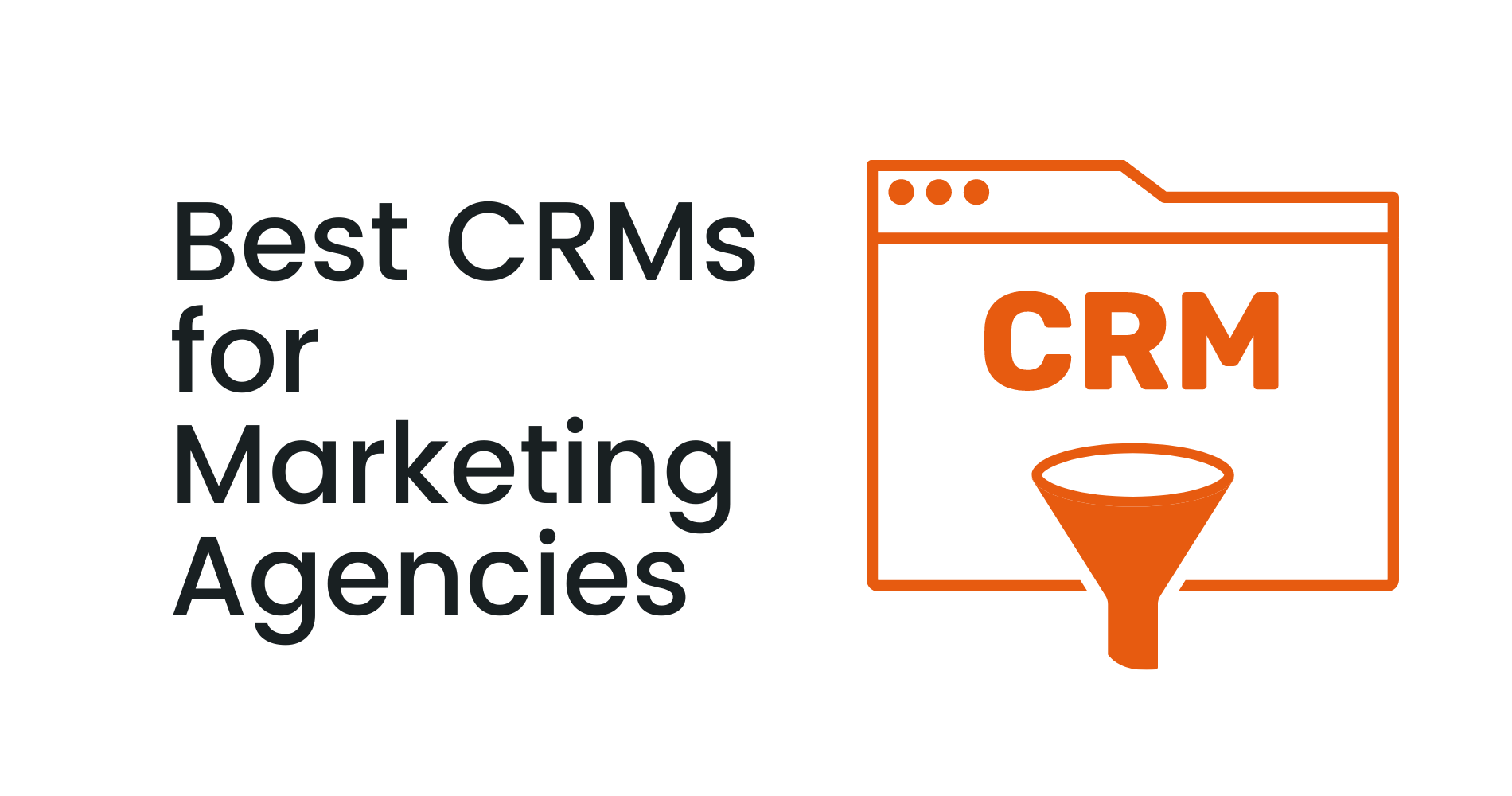
In the dynamic world of e-commerce, staying ahead of the curve requires more than just a visually appealing website and a compelling product catalog. It demands a strategic approach that leverages the power of data, personalization, and seamless customer experiences. This is where the integration of a Customer Relationship Management (CRM) system with your WooCommerce store becomes a game-changer. This comprehensive guide delves into the intricacies of CRM integration with WooCommerce, exploring its benefits, implementation strategies, and the myriad ways it can revolutionize your online business.
The Power of CRM in E-commerce
Before we dive into the specifics of WooCommerce integration, let’s understand the fundamental role of CRM in the e-commerce landscape. A CRM system is essentially a centralized hub for managing all your customer interactions and data. It acts as a repository for crucial information such as contact details, purchase history, communication logs, and customer preferences. By consolidating this data, CRM empowers businesses to:
- Gain a 360-degree view of your customers: Understand their behavior, needs, and preferences.
- Personalize customer interactions: Tailor marketing messages, product recommendations, and support interactions to individual customer profiles.
- Improve customer service: Provide faster, more efficient, and more personalized support.
- Boost sales and revenue: Identify upselling and cross-selling opportunities, nurture leads, and drive conversions.
- Enhance marketing effectiveness: Segment your audience, target specific customer groups, and measure the performance of your marketing campaigns.
- Streamline workflows and improve efficiency: Automate tasks, reduce manual data entry, and free up your team to focus on more strategic initiatives.
Why Integrate CRM with WooCommerce?
WooCommerce, a popular e-commerce platform built on WordPress, provides a flexible and customizable solution for online businesses. However, by itself, WooCommerce has limitations in terms of advanced customer relationship management capabilities. This is where CRM integration becomes crucial. The benefits of integrating CRM with WooCommerce are numerous and far-reaching:
1. Enhanced Customer Data Management
Integrating CRM with WooCommerce allows you to seamlessly sync customer data between the two systems. This means that every time a customer makes a purchase, signs up for a newsletter, or interacts with your website, their information is automatically updated in your CRM. This eliminates the need for manual data entry, reduces the risk of errors, and ensures that your customer data is always up-to-date and accurate.
2. Personalized Marketing and Targeted Campaigns
With CRM integration, you can leverage the wealth of customer data to create highly personalized marketing campaigns. You can segment your audience based on their purchase history, browsing behavior, demographics, and other criteria. This allows you to send targeted email campaigns, offer personalized product recommendations, and deliver tailored content that resonates with individual customers. This level of personalization significantly increases engagement, conversion rates, and customer loyalty.
3. Improved Customer Service and Support
CRM integration empowers your customer service team with instant access to customer information, including purchase history, support tickets, and communication logs. This allows them to provide faster, more efficient, and more personalized support. They can quickly understand a customer’s needs, resolve issues effectively, and build stronger relationships. This leads to increased customer satisfaction and a positive brand image.
4. Streamlined Sales Processes
CRM integration can streamline your sales processes by automating tasks such as lead generation, lead nurturing, and sales reporting. You can track leads as they progress through the sales pipeline, identify opportunities for upselling and cross-selling, and gain valuable insights into your sales performance. This helps you close more deals, increase revenue, and optimize your sales strategy.
5. Increased Sales and Revenue
By combining the power of WooCommerce and CRM, you can create a more customer-centric e-commerce experience. This leads to increased sales and revenue through several channels, including:
- Increased conversion rates: Personalized product recommendations and targeted marketing campaigns drive more conversions.
- Higher average order value: Upselling and cross-selling opportunities increase the value of each order.
- Improved customer retention: Personalized experiences and excellent customer service foster customer loyalty and reduce churn.
- Repeat purchases: Targeted marketing campaigns and personalized offers encourage repeat purchases.
6. Data-Driven Decision Making
CRM integration provides you with valuable data and insights into your customers, sales performance, and marketing effectiveness. You can use this data to make informed decisions about your product offerings, pricing strategies, marketing campaigns, and overall business strategy. This data-driven approach helps you optimize your business for growth and success.
Choosing the Right CRM for WooCommerce
The market offers a wide array of CRM systems, each with its own strengths and weaknesses. Choosing the right CRM for your WooCommerce store is crucial for maximizing the benefits of integration. Consider the following factors when making your decision:
- Features and Functionality: Ensure the CRM offers the features you need, such as contact management, sales automation, marketing automation, customer service tools, and reporting capabilities.
- Integration Capabilities: Verify that the CRM seamlessly integrates with WooCommerce and other platforms you use.
- Scalability: Choose a CRM that can scale with your business as it grows.
- Ease of Use: Select a CRM that is user-friendly and easy to navigate.
- Pricing: Consider the pricing plans and choose a CRM that fits your budget.
- Reviews and Ratings: Read reviews and ratings from other users to get an idea of the CRM’s performance and reliability.
- Customer Support: Ensure the CRM provider offers excellent customer support.
Some popular CRM systems that integrate well with WooCommerce include:
- HubSpot CRM: A free CRM that offers a comprehensive suite of features, including contact management, sales automation, and marketing tools.
- Zoho CRM: A powerful CRM that offers a wide range of features, including sales automation, marketing automation, and customer service tools.
- Salesforce Sales Cloud: A leading CRM that offers a comprehensive suite of features for sales, marketing, and customer service.
- ActiveCampaign: A marketing automation platform that integrates with WooCommerce to provide advanced segmentation and personalized email campaigns.
- Klaviyo: An email marketing platform that integrates with WooCommerce to provide personalized email marketing campaigns and customer lifecycle automation.
How to Integrate CRM with WooCommerce
Integrating CRM with WooCommerce typically involves the following steps:
- Choose a CRM: Select the CRM system that best fits your needs and budget.
- Install a WooCommerce Integration Plugin: Most CRM systems offer dedicated plugins for WooCommerce. Install and activate the plugin in your WordPress dashboard.
- Connect Your Accounts: Connect your WooCommerce store and CRM account by entering your API keys and other required credentials.
- Configure Data Synchronization: Configure the data synchronization settings to determine which data will be synced between WooCommerce and your CRM. This includes customer data, order information, product data, and other relevant information.
- Test the Integration: Test the integration to ensure that data is being synced correctly between the two systems.
- Customize the Integration: Customize the integration settings to tailor it to your specific needs. This may include creating custom fields, setting up automation rules, and configuring email templates.
- Train Your Team: Train your team on how to use the integrated system to maximize its effectiveness.
Detailed Steps for Specific CRM Integrations:
While the general steps above apply to most CRM integrations with WooCommerce, the specific steps may vary depending on the CRM system and the integration plugin you are using. Here’s a brief overview of the integration process for some popular CRM systems:
HubSpot Integration:
- Install the HubSpot for WooCommerce plugin.
- Connect your HubSpot account to your WooCommerce store.
- Configure data synchronization settings, including customer data, order information, and product data.
- Set up workflows to automate tasks, such as sending welcome emails or creating deals for new customers.
Zoho CRM Integration:
- Install the Zoho CRM plugin for WooCommerce.
- Connect your Zoho CRM account to your WooCommerce store.
- Map WooCommerce fields to Zoho CRM fields to ensure data is synced correctly.
- Set up workflows to automate tasks, such as creating leads or updating customer information.
Salesforce Integration:
- Install the Salesforce Connector for WooCommerce plugin.
- Connect your Salesforce account to your WooCommerce store.
- Configure data synchronization settings, including customer data, order information, and product data.
- Set up workflows to automate tasks, such as creating opportunities or updating customer records.
ActiveCampaign Integration:
- Install the ActiveCampaign for WooCommerce plugin.
- Connect your ActiveCampaign account to your WooCommerce store.
- Configure data synchronization settings, including customer data, order information, and product data.
- Create automated email campaigns based on customer behavior, such as abandoned cart emails or post-purchase follow-up emails.
Klaviyo Integration:
- Install the Klaviyo for WooCommerce plugin.
- Connect your Klaviyo account to your WooCommerce store.
- Configure data synchronization settings, including customer data, order information, and product data.
- Create personalized email marketing campaigns based on customer behavior, such as browsing history, purchase history, and abandoned cart activity.
Best Practices for CRM Integration with WooCommerce
To ensure a successful CRM integration with WooCommerce, follow these best practices:
- Plan Ahead: Before you begin the integration process, take the time to plan your strategy. Identify your goals, determine which data you want to sync, and choose the right CRM system and integration plugin.
- Clean Your Data: Before you sync your data, clean your existing data in both WooCommerce and your CRM. This will help ensure that the data is accurate and consistent.
- Map Fields Carefully: Carefully map the fields between WooCommerce and your CRM to ensure that data is synced correctly.
- Test Thoroughly: Test the integration thoroughly to ensure that data is being synced correctly and that all features are working as expected.
- Monitor Regularly: Monitor the integration regularly to ensure that it is running smoothly and that data is being synced correctly.
- Train Your Team: Train your team on how to use the integrated system to maximize its effectiveness.
- Use Segmentation: Leverage segmentation to target specific customer groups with personalized marketing campaigns.
- Automate Tasks: Automate tasks such as lead generation, lead nurturing, and sales reporting to streamline your sales processes.
- Analyze Data: Analyze the data from your CRM to gain insights into your customers, sales performance, and marketing effectiveness.
- Continuously Optimize: Continuously optimize your CRM integration to improve its performance and maximize its benefits.
Troubleshooting Common CRM Integration Issues
Even with careful planning and execution, you may encounter some common issues during the CRM integration process. Here are some troubleshooting tips:
- Data Synchronization Errors: If you experience data synchronization errors, check the following:
- Ensure that your API keys are correct.
- Verify that the data fields are mapped correctly.
- Check for any data validation errors.
- Review the integration logs for error messages.
- Missing Data: If you are missing data, check the following:
- Ensure that the data fields are being synced between WooCommerce and your CRM.
- Verify that the data is being entered correctly in WooCommerce.
- Check the integration settings to ensure that the data is being synced.
- Performance Issues: If you experience performance issues, check the following:
- Optimize your WooCommerce store and CRM performance.
- Limit the amount of data being synced.
- Use caching to improve performance.
- Plugin Conflicts: Plugin conflicts can sometimes cause issues with CRM integration. If you suspect a plugin conflict, try deactivating other plugins one by one to identify the culprit.
- API Rate Limits: Some CRM systems have API rate limits. If you exceed these limits, you may experience errors. Check your CRM’s API documentation for rate limits and adjust your integration settings accordingly.
- Contact Customer Support: If you are unable to resolve the issue on your own, contact the customer support team for your CRM system or integration plugin.
The Future of CRM and WooCommerce Integration
The integration of CRM and WooCommerce is an evolving landscape. As technology advances, we can expect to see even more sophisticated integrations and features. Here are some potential future developments:
- AI-powered personalization: Artificial intelligence will play a greater role in personalizing customer experiences, such as providing personalized product recommendations, automating customer service interactions, and predicting customer behavior.
- Enhanced automation: Automation will become even more sophisticated, allowing businesses to automate more tasks and streamline their workflows.
- Improved analytics and reporting: CRM systems will offer more advanced analytics and reporting capabilities, providing businesses with deeper insights into their customers and sales performance.
- Seamless integration with other platforms: CRM systems will integrate seamlessly with other platforms, such as social media, email marketing, and e-commerce platforms.
- Voice-activated CRM: Voice-activated CRM systems will become more prevalent, allowing businesses to interact with their CRM systems using voice commands.
Conclusion: Embrace the Power of Integration
Integrating CRM with WooCommerce is no longer a luxury; it’s a necessity for businesses aiming to thrive in the competitive e-commerce arena. By leveraging the power of CRM, you can gain a deeper understanding of your customers, personalize their experiences, improve customer service, streamline your sales processes, and ultimately drive more sales and revenue. Following the guidelines and best practices outlined in this guide, you can successfully integrate your CRM with WooCommerce and unlock the full potential of your online business. Embrace the power of integration and watch your e-commerce store flourish.


